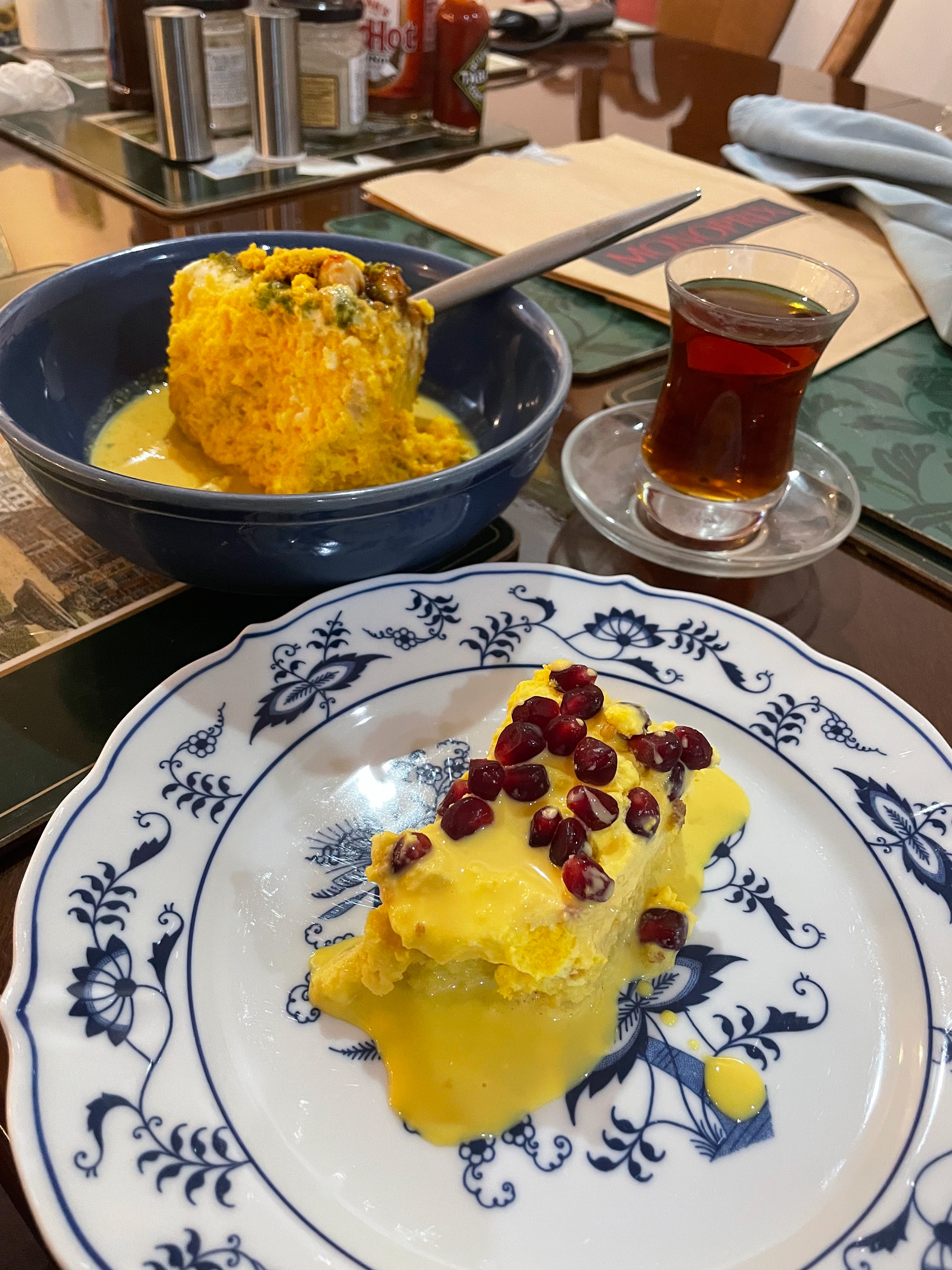My pomegranate-topped take on saffron tres leches cake.
Tres leches cake from Azteca in Kuwait.
From Miami Spice by Steven Raichlen, 1993.
Photo of "trileqe" taken in Prizren, Kosovo, on the 14th of April 2000. Copyright: Divine Reflections
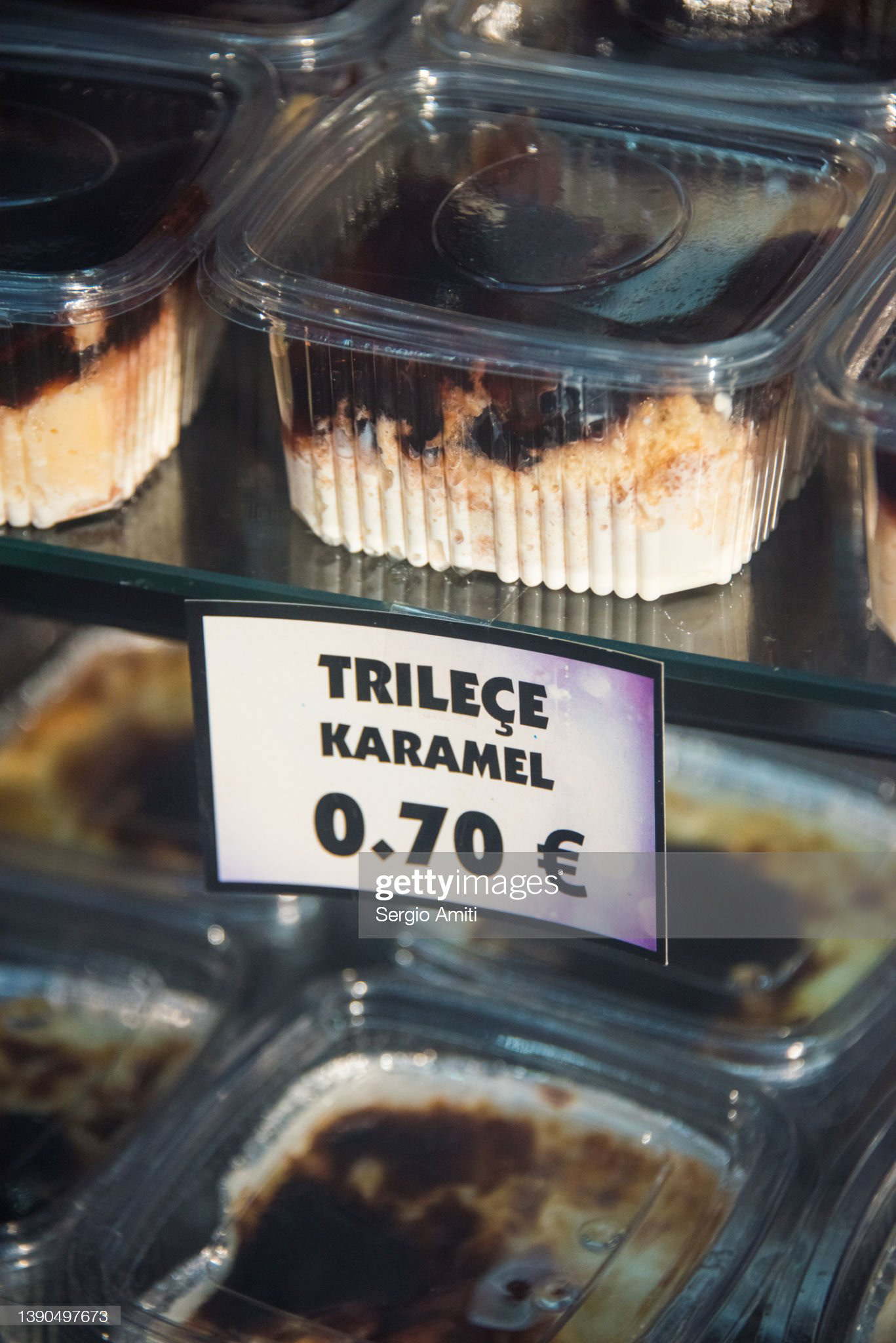
Trileçe in a bakery in Prizren, Kosovo. Copyright: Sergio Amici https://www.gettyimages.dk/search/stack/806244039?family=creative&assettype=image

The earliest publicly available references to "trilece" on Facebook, all in Albanian.
Zoulbia/Jalebi: Photo by Wikipedian "Lion.harvinder".
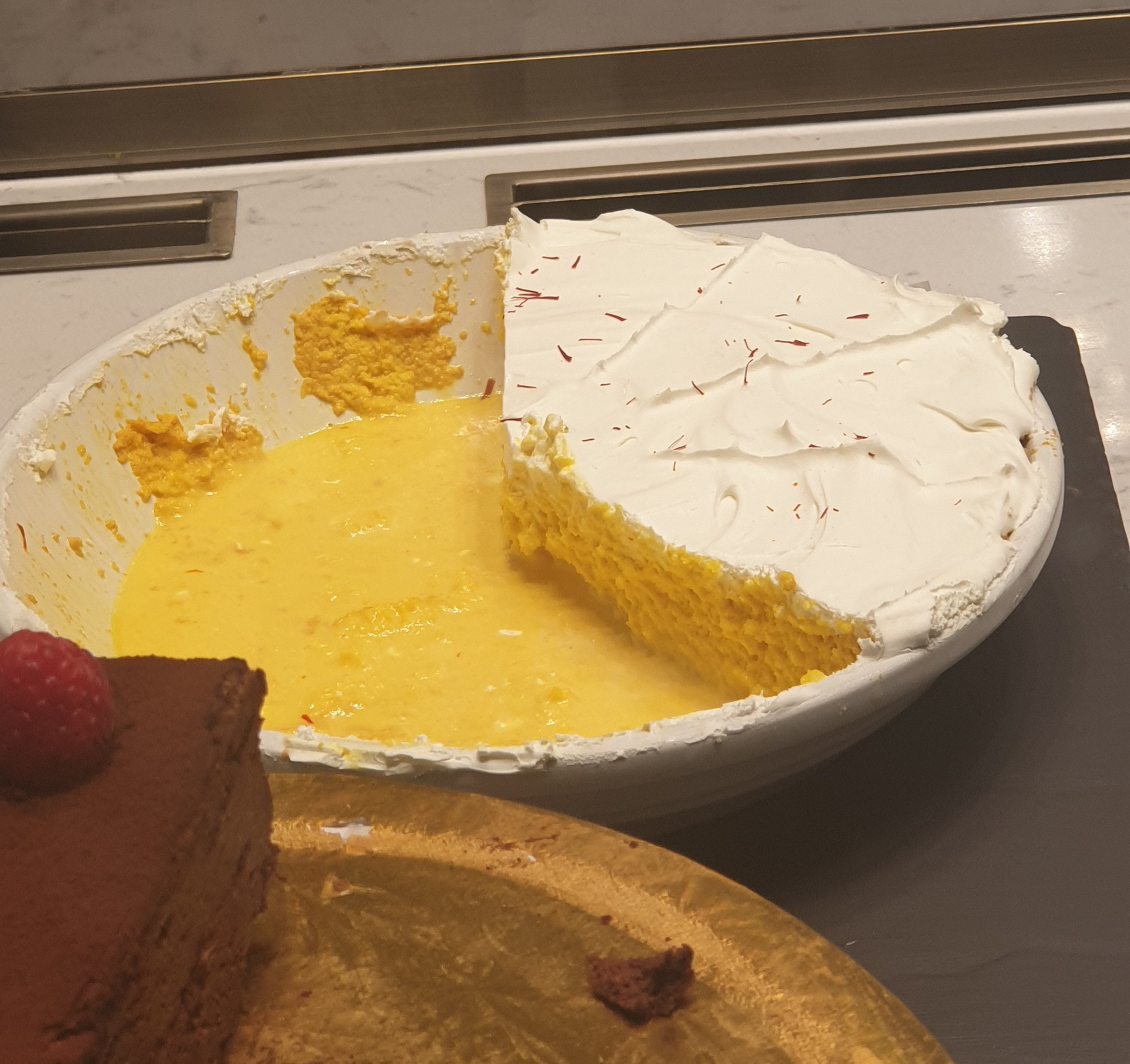
The first time I (unknowingly) set eyes upon Saffron Tres Leches.


When conducting a Facebook search, I was surprised to find a post of mine from January 2019 for "tres leches pancakes with saffron". These were from The Breakfast Club in Kuwait, and I found the original photo on my phone, dated from the 19th of December 2018, so this may have actually been the first time I had tres leches of any sort.


Saffron Milk Cake, topped with mango, from Life with Cacao. The eagle-eyed (and hungry) among you will also notice the scrumptious pistachio cake in the background, topped with pashmak/pişmaniye.
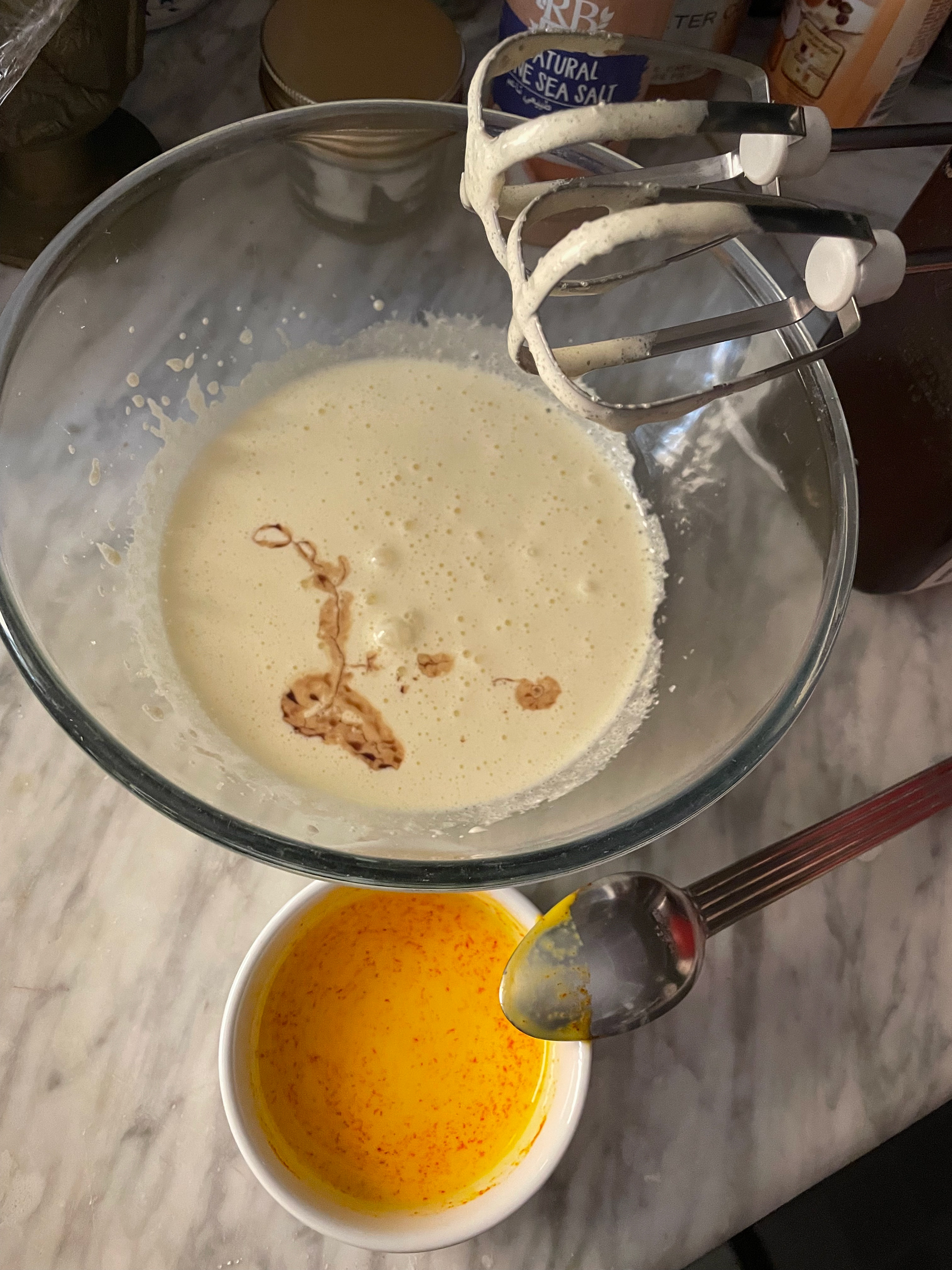

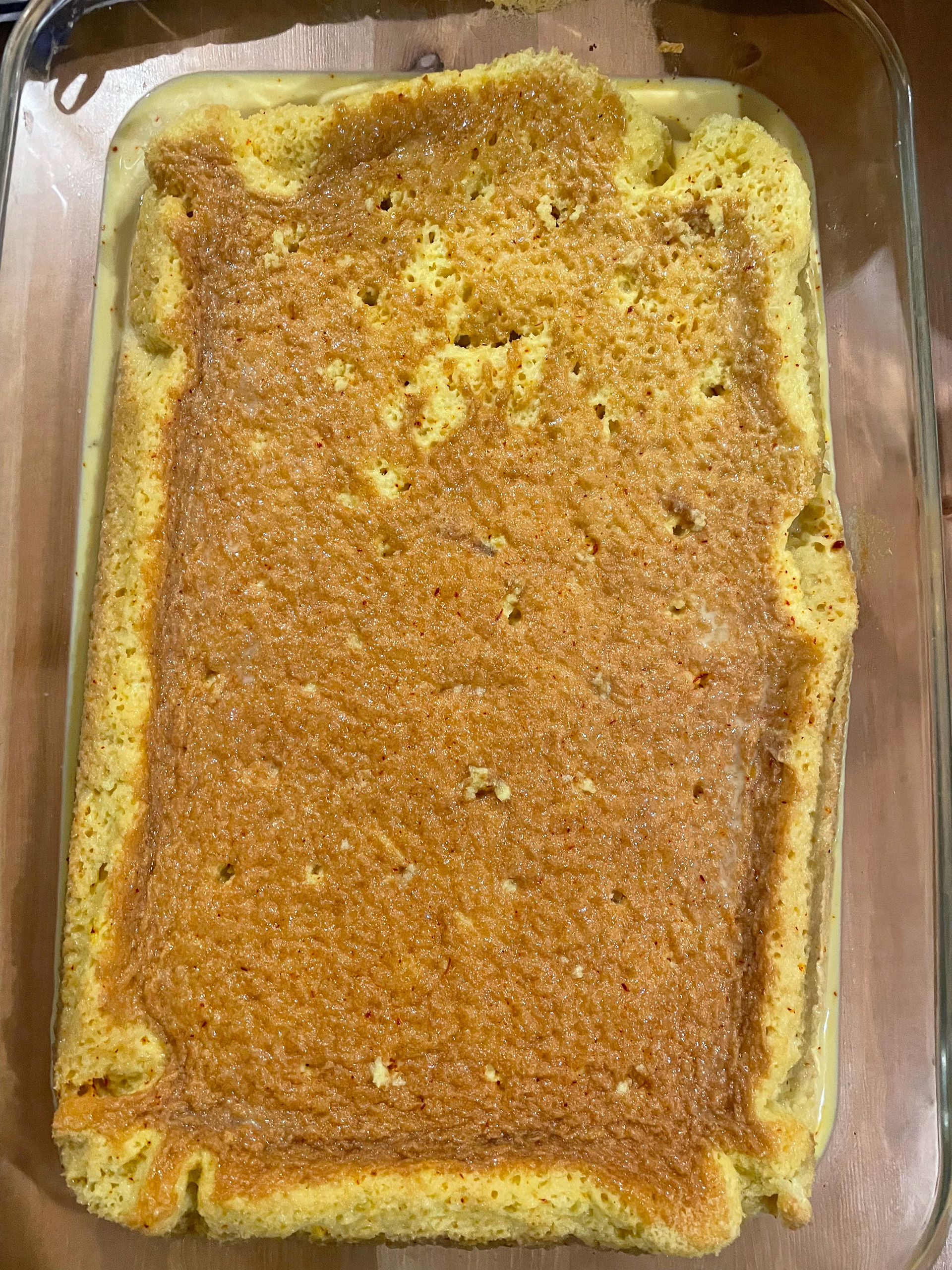
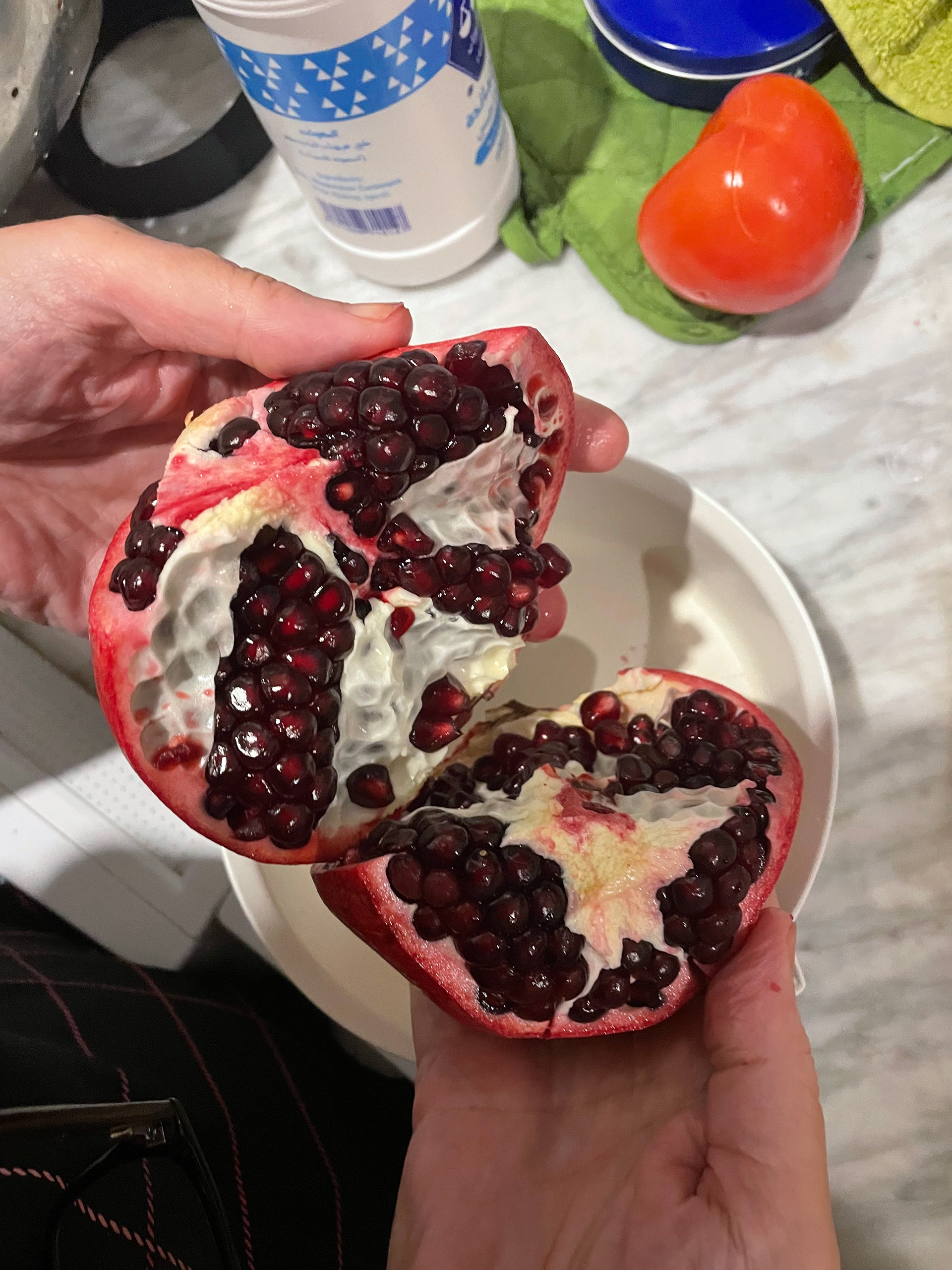
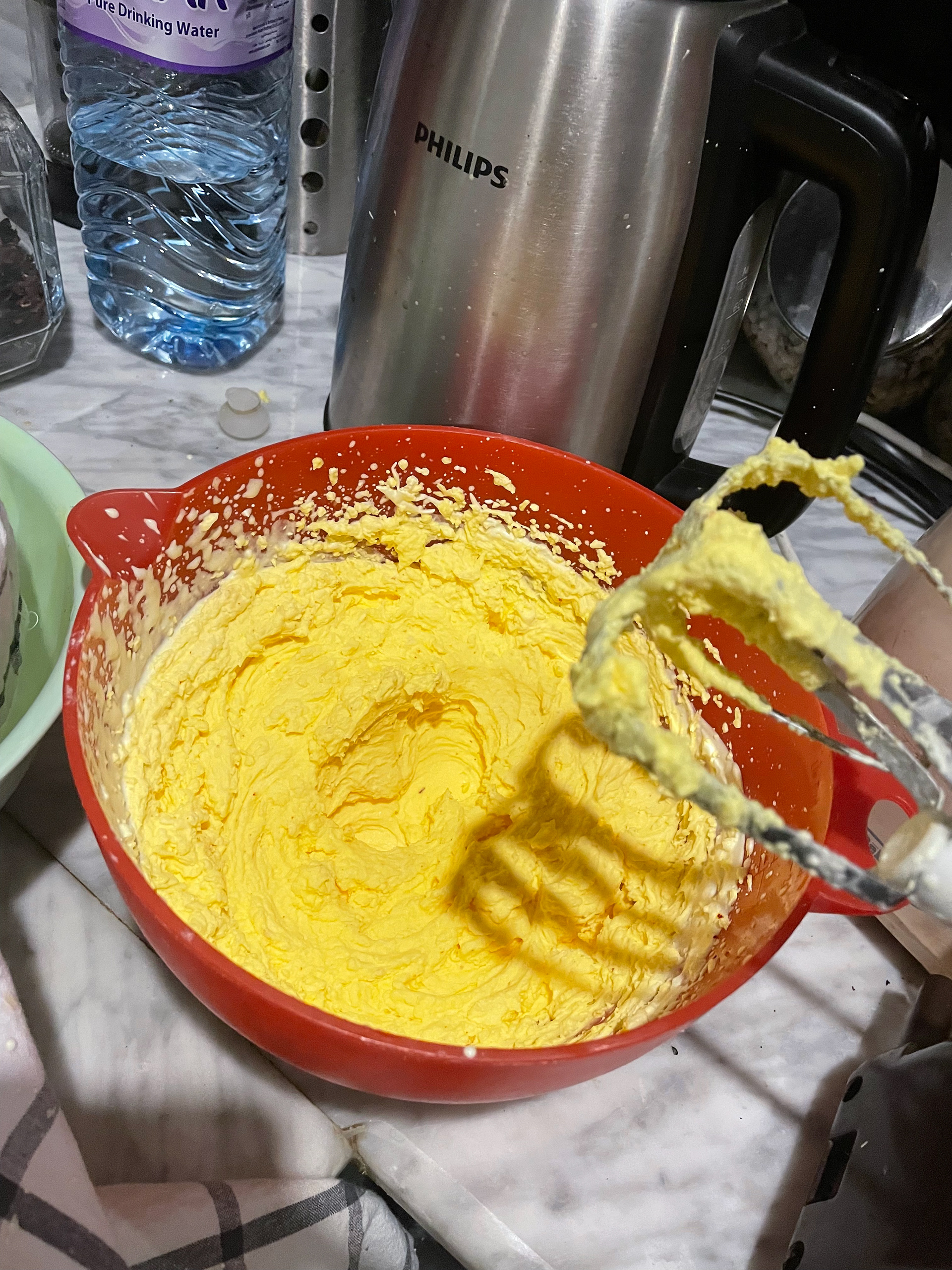
A lot of work, but totally worth it.

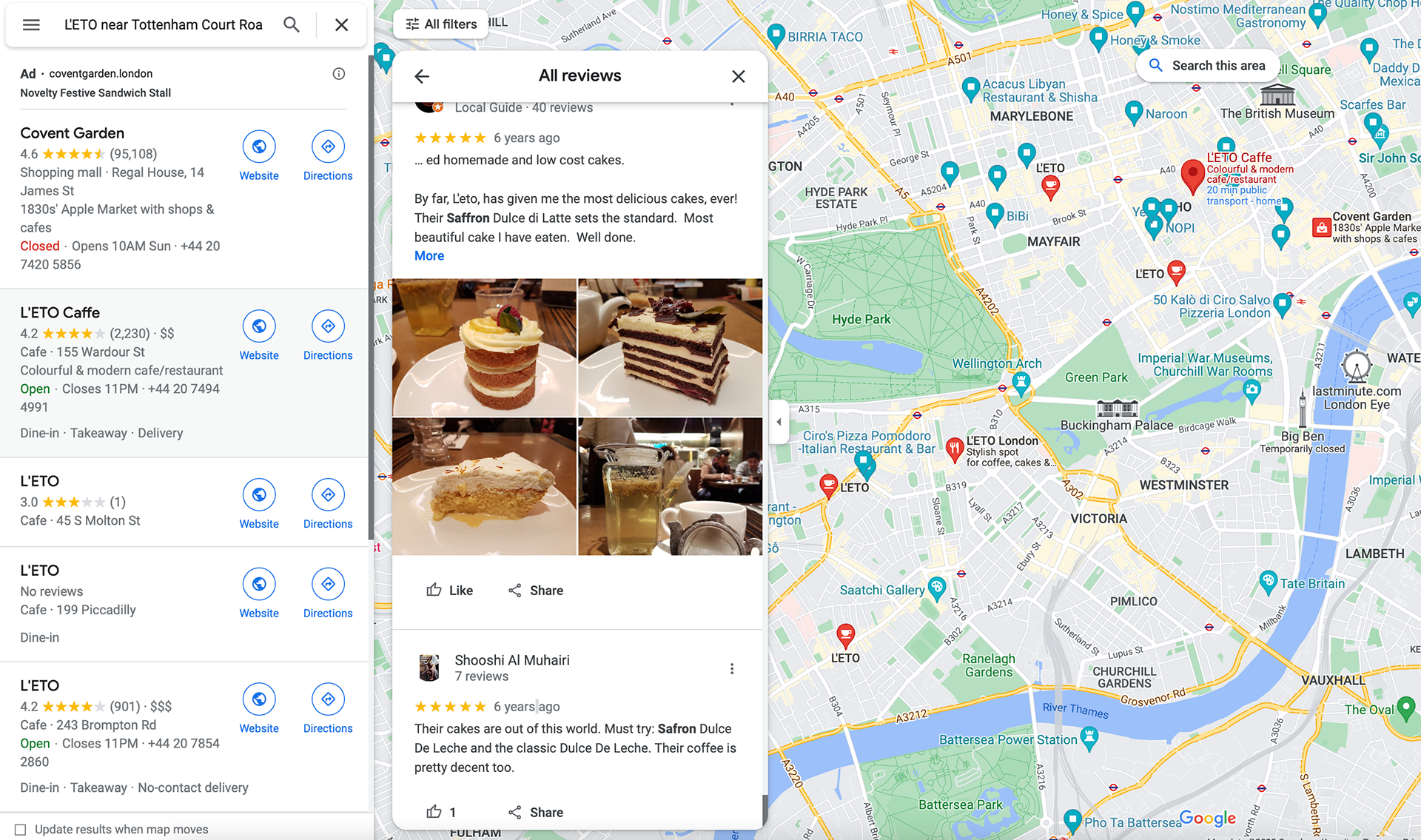
Is this man the first to add saffron to tres leches cake?

Saffron Milk Cake from Asha's in Kuwait. Heavy on the cardamom, and the cake itself isn't particularly milky (note the right half which is dry).

My cake.
